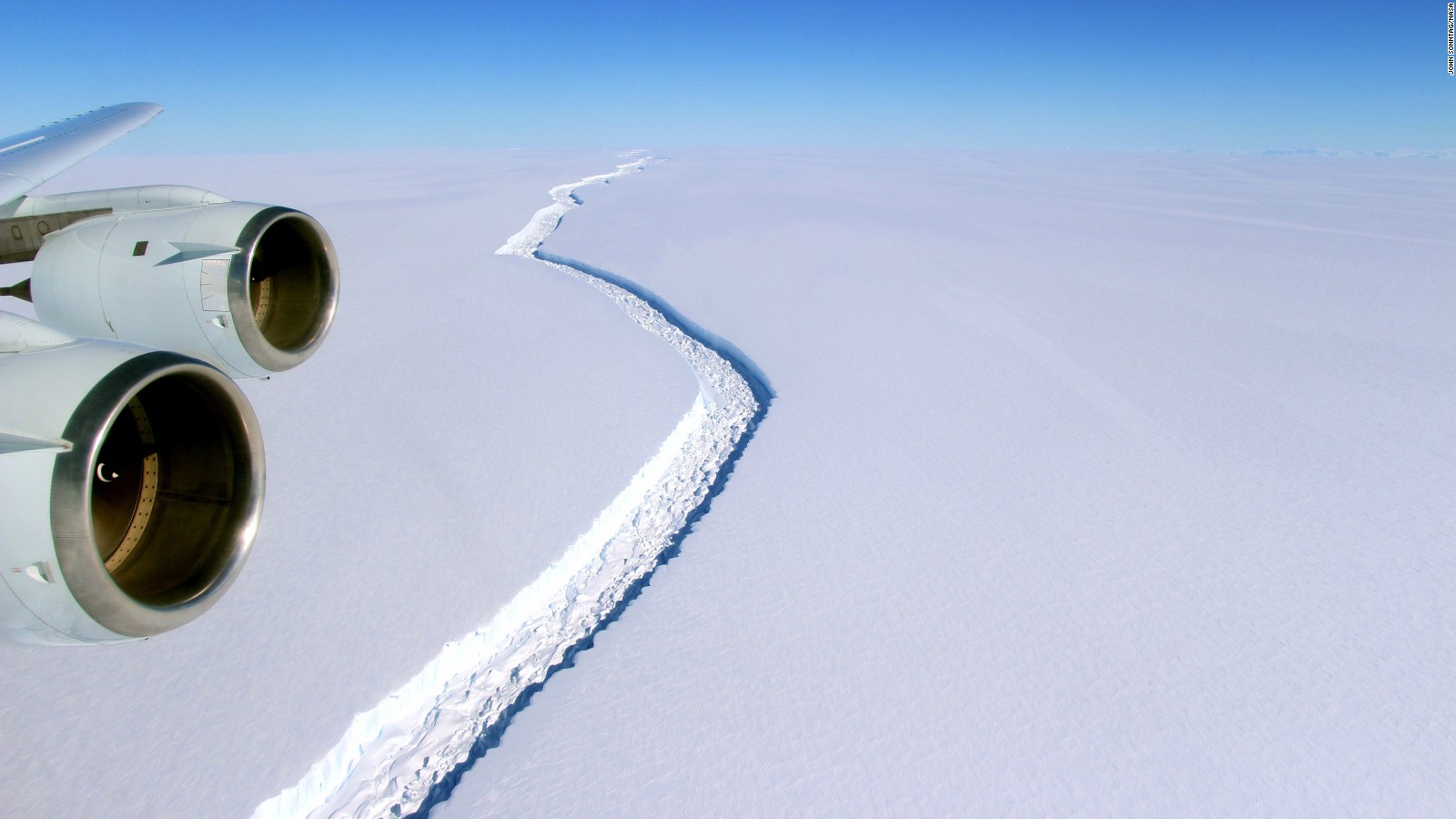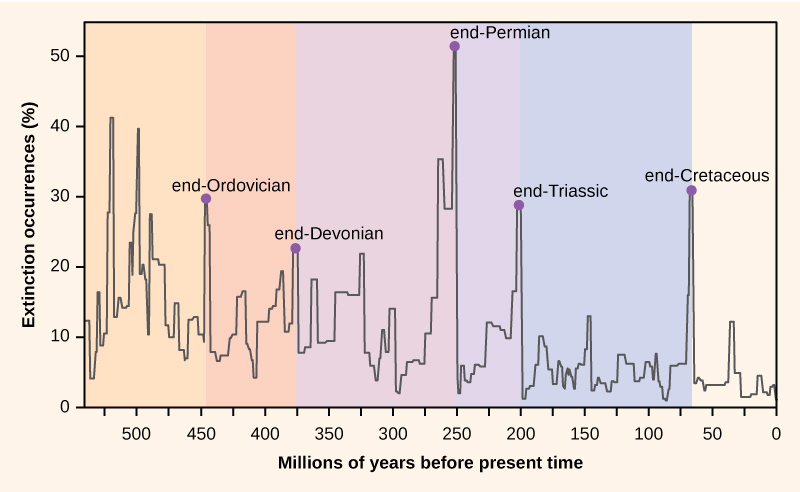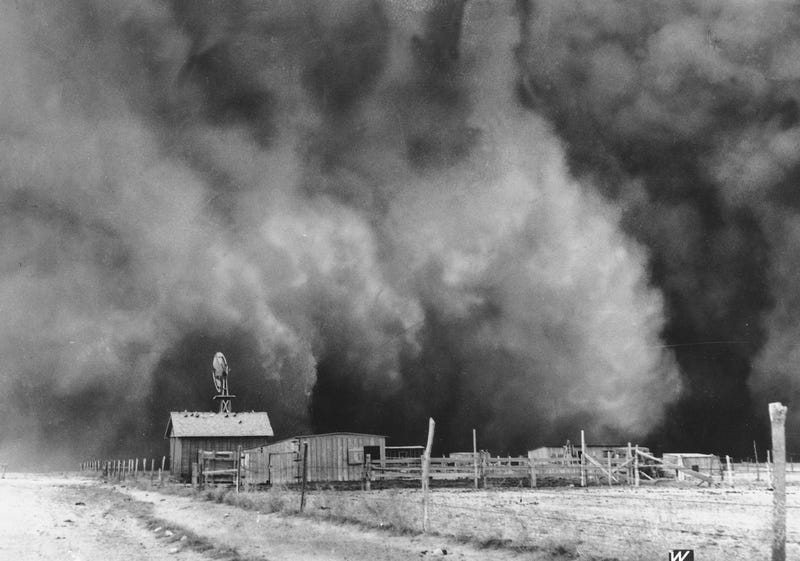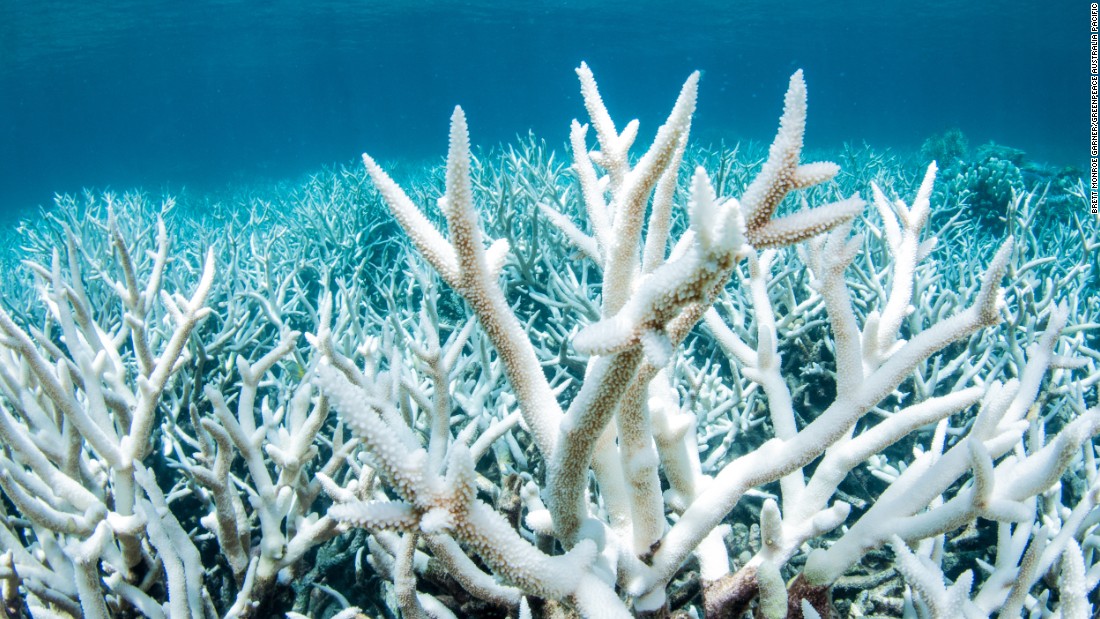By 2035, climate change will reach a point of no return. Unless immediate, monumental action is taken, 2035 will literally be the beginning of the end. These number are optimistic, as science sides with caution. That mean we have 17 or less years of living without food shortage, economic collapse, unliveable environments, and inevitably, extinction. Ice melt and sea-level rise, which has been dominating the climate change news, is barely scratching the surface. Fleeing the coastline from soon to be underwater cities won’t be nearly enough to save the human race. By the end of this century, within a teenagers lifetime, much of the Earth will be completely unliveable or impossibly undesirable.

It is, I promise, worse than you think.
In February 2008, the Svalbard Global Seed Vault opened in Norway. Ironically nicknamed “Doomsday,” it was flooded 10 years later when a string of warm days melted permafrost in the North Pole. The only thing more ironic than “Doomsday” being flooded, is permafrost melting. Permafrost hasn’t been a climate concern because the name, “permanent-frost,” suggests it won’t melt. This melting only adds to global warming in a positive feedback loop. Lakes are already bubbling with trapped greenhouse gases as the permafrost melts and seeps into the bodies of water. Bubbling to the surface is methane, a greenhouse gas 34 times more powerful than carbon dioxide. As temperatures rise, Arctic ice melts. This ice contains 1.8 trillion tons of carbon, twice as much that is suspended in the atmosphere, causing the temperatures to rise even more, melting more ice. Global warming since 1998, has been moving twice as fast than originally predicted. This May in Antartica, a crack in an ice-shelf grew 11 miles in six days. It is now in open water. A trillion-ton piece of ice is now the largest iceberg… ever.

When it comes to climate change, we aren’t nearly imaginative enough. We have barely grasped the consequences of our actions. A potential reason is timidness in science. The extreme editing of scientific research has caused scientists to not effectively express how dire the threat of global warming is. For some reason, we believe that climate change will always effect elsewhere. However, the more frequent and intense hurricanes in America are proving that global warming will completely change everyone’s way of life. Within a century, we could lose Miami and Bangladesh, even if we stop burning fossil fuels in a decade. We are reaching the point of no return. These aren’t predictions anymore, this is our path. At one point, global warming by two degrees was considered the point of disaster, where millions of climate refugees would be released. N0w, it is our goal in the Paris climate accord. Yet, we still have slim odds of hitting it. The U.N. Intergovernmental Panel on Climate Change issues serial reports that we will hit four degrees of warming by the beginning of the next century on our current path. However, the upper end of the probability curve reaches eight, and the authors still haven’t figured out how to deal with the permafrost melt.
The Earth has experienced 5 mass extinctions (other than the one we are experiencing now). All but one were caused by climate change from greenhouse gases. The extinction of the dinosaurs, which had a relatively low death toll, was the only extinction caused by asteroids. 252 million years ago, the Earth rose 5 degrees. At that time, the oceans were hundreds of feet higher, and 97% of life on Earth was killed by methane gas released in the Arctic.

We are adding carbon to the atmosphere 10 times faster than the extinction 252 million years ago. Experts in the field have reached an alarming conclusion… no amount of emission reduction alone can fix climate change. We are reaching a new era, and it is defined by human intervention
This information is shocking, but the true panic comes from the main 7 predicted aftermath effects. Firstly, with extreme heat, much of the Earth will become unliveable for humans. As warm-blooded mammals, survival requires constant temperature control. We achieve this through sweating and other somatic systems. This also means the air must be cool enough to draw heat off the body. At 7 degrees of warming, this would become impossible at many areas around the equator, where heat is amplified due to humidity. Moving around at 41 degrees celsius would be lethal, effectively cooking the body inside and out. Within a few hours, moving outside would cook us to death! Skeptics argue that the climate has warmed and cooled before, but this rate of warming is unheard of, and the temperature window of human life is extremely narrow. At 11 or 12 degrees of warming, half of the worlds population as currently distributed would die because of heat alone. We have already reached a point of extreme heat stress. Since 1980, the planet has 50 times more areas with extreme heat and temperatures. In the sugarcane region of El Salvador, one-fifth of the population has chronic kidney disease, and with expensive dialysis, those with kidney failure have a life expectancy of 5 years; without dialysis, they have a few weeks.
Secondly, global warming won’t just bring heat death, it will bring aggressive and constant famine. The areas that have ideal temperatures for growing will soon become to hot. However, the areas north and south aren’t fit for farmland. They may soon have the ideal temperature, but they are often hilly and rocky and lack of vegetation means the soil isn’t fertile to sustain growth. Constant cycles of death and regrowth causes the formation of nutrient rich topsoil fit for the farming capacity we require today. Forming topsoil however, takes centuries. The basic rule of cereal crops is that for every degree increase, yield declines by 10%. Some predictions are as high as 15% and 17%, meaning we may have 50% more people to feed with 50% less grain at the end of the century. Not even to mention the unsustainable diet we all have. North American’s have extremely meat heavy diets, and it takes 16 calories of grain to produce just one calorie of beef. There is no possible way we could sustain our population, let alone a population that isn’t completely vegan or at least vegetarian. Soon, Northern Canada and Russia will be at peak temperature to grow cereal crops, but our soil is nowhere near fertile enough to grow food for a global population. Drought might be an even bigger problem. Predictions for this century are essentially unanimous: unprecedented droughts will appear nearly everywhere that crops are currently grown. By 2080, without permanent emission reductions, Europe will be in an extreme and permanent drought much worse than the American Dust Bowl. The same will be true in much of the Middle East, densely populated areas of Australia, Africa, and South America, and the breadbasket areas of China. America would experience worse drought than in the 1930’s, as predicted by a 2015 NASA study. They also predicted it would be the worst drought in thousands of years, even worse than in the 1100’s and 1300’s when the rivers East of the Nevada mountains dried up, which most likely caused the extinction of the Anasazi civilization. Today’s experts estimate that 800 million are undernourished. This is relatively good, but the U.N. has estimated that this year, separate famines in Yemen, Somalia, Nigeria, and South Sudan will kill 20 million alone.

Further, ice carries a record of Earth’s history. Air bubbles in Arctic ice carries information of the climate. Not only will the melting of this ice-release carbon from ancient air, it will also release air-born illnesses. Currently, there are diseases, trapped in Arctic ice, that haven’t circulated Earth for millions of years, in some cases, before human were even able to experience it. Alaskan researchers have already discovered remnants of a 1918 flu that killed 100 million people, infecting 400 million more. Although many organisms won’t be able to survive the thawing process, already a boy has been killed and 20 others were infected by anthrax that was exposed on a reindeer carcass after permafrost retreated. The bacteria killed the reindeer over 75 years ago. As well, as tropical temperatures creep farther from the equator, so will diseases. Areas unaffected by malaria due to cold winters, will soon have the number one killer in their backyard yearlong.

That’s still not all. Eventually, even the air will become unbreathable. By 2100, carbon dioxide in the air will reach a concentration of 1000 parts per million. It is already at 400. At that concentration, human function will decline by 21% due to the lack of oxygen. Increased warming also relates to ground-level ozone forming in our atmosphere. By 2090, the National Centre for Atmospheric Research concluded that 2 billion people will be living in areas above the World Health Organization’s “safe” air quality level. Among increased asthma diagnosis and other respiratory disease magnification, ozone inhaled by pregnant mothers has been shown to increase risk of autism, which mirrors the autism epidemic in polluted West Hollywood. Over 10 000 people die each year from particles emitted from burning fossil fuels. Over 300 000 die from wildfire smoke, which is particularly concerning as global warming has exacerbated the effects and length of wildfire season in much of America and around the globe. These fires continue to add to global warming as stored carbon is released, and they are no longer able to recycle carbon dioxide into oxygen. There is fear that the Amazon will soon dry out enough to be susceptible to forest fire. The Amazon alone supplies 20% of the world’s oxygen. In 2013, melting ice caused weather in Asia to completely change. Once the natural filtration system was demolished, northern China became completely unbreathable. Literally. The air quality index measures the 301 to 500 range as warning of
Serious risk of respiratory effects.
At that level,
Everyone should avoid all outdoor exertion.
China reached 800. Smog was the cause of a third of all deaths in the country that year.
Crop failure and resulting economic disputes among other factors have caused scientists to predict that for every half a degree of warming, there will be 10-20 percent increase in armed conflicts. Syria’s drought that caused their civil war was due to climate change. One cannot conclude that the war was caused by climate change, as Lebanon, a neighbouring country, experienced the same crop failure. Climate science isn’t simple as it stretches into all aspects of our life. Although one can’t predict climate change’s direct relationship to conflict, the arithmetic suggests that within 5 years, our planet will have half as many wars as we do today, and by the end of the century, social conflict could double. With over 65 million people displaced and wandering the planet right now, migration will put a strain on our current systems. The connection between conflict and climate is tricky. It partly has to do with agriculture and economics. Immigration also plays a large role. One things for certain, crime rates will rise and violence will be magnified by our current course of action.

A growing number of historians studying “fossil capitalism” are beginning to even suggest that the swift economic growth that began in the 18th century is not due to innovation and inventions. Rather, it simply began when we discovered fossil fuels. Perhaps, a onetime injection of value to an otherwise stagnant economy. Before fossil fuels, no one lived better than their parents before them 500 years down the line. Except for the immediate survivors of epidemics like the Black Plague who benefited economically from resources liberated through mass casualty. After we’ve burnt all the fossil fuels, some suggest that we will return to a steady global economy. Not only will that drastically change our way of life, but that onetime injection comes with a devastating cost: climate change. Other research suggests that for each degree of warming, global warming cost 1.2 percent of GDP, which is huge considering growth in the low single digits is considered “strong.” This a result of changes in agriculture, weather, increased violence, and loss of labour. At the higher end of the curve, there is a 12 percent chance that global output will be reduced by 50 percent by 2100. There is a 51 percent chance that it lowers by 20 percent or more by then. The Great Recession lowered GDP by 6 percent by comparison. It’s hard to comprehend, but imagine an economy half as big, with half the value, producing half the jobs we have now, and half the products. It’s frustrating and impossible to fathom the idea of postponing government action and waiting for technology to solve the problem when it is such a terrible business model.
The sea has been a major cause for concern regarding climate change. Rightfully so, without radical action we’ll see 4 to 10 feet increase in sea levels. A third of the world’s major cities are on the cost. Not to mention the millions of people living there, these cities also contain major energy sources, fisheries, navy bases, and farmland. Even those above 10 feet will flood much more intensely and readily once the water gets that high. At least 600 million people live within 10 meters of sea level today. That’s just the start. A third of the world’s carbon is stored in the ocean. This carbon sink is the reason we haven’t been warming at a faster rate than we are right now. However, as carbon mixes with water it creates forms of calcium carbonates, which causes pH levels to decline through a process called ocean acidification. On it’s own, this process may add a half degree of warming. This acidification is destroying the various environments that caused life to arise in the first place. Coral bleaching (or more accurately “coral dying”) is another casualty of ocean acidification. This is extremely terrible as coral reefs house a quarter of marine life and supply food to half a billion people. Ocean acidity will also harm fish directly. It’s hard to predict that effect on humans, but experts are certain that oysters and mussels will struggle to grow their shell. When human blood drops in pH as far as the ocean has, the results are seizures, comas, and death. Further, ocean acidification causes vicious dead zones in a positive feedback loop where bodies of water drastically lose dissolved oxygen concentration. In the Gulf of Mexico these dead zones are already created. The “Skeleton Coast,” which was originally given that name due to whale detritus, is bubbling with hydrogen sulfide. Hydrogen sulfide is so toxic our noses are evolutionary trained to recognize it for survival. It was also the gas that killed 97% of life on Earth. During that time, the dead zones in the ocean spread, killing off marine life that dominated the oceans. The gas then went into the atmosphere, killing everything on land, even plants. It took millions of years to recover.

So what now? Soon natural disasters will be called weather. Maybe no amount of fossil fuel reduction will help. Some scientists believe that climate change is the answer to Fermi’s paradox,
If the universe is so big, then why haven’t we encountered any other intelligent life in it?
The answer suggested is that civilizations life span is only a few thousand years. For industrial civilizations, maybe only a few hundred.
In a universe that is many billions of years old, with star systems separated as much by time as by space, civilizations might emerge and develop and burn themselves up simply too fast to ever find one another.
Peter Ward, a charismatic palaeontologist among those who discovered mass extinctions were caused by greenhouse gases, calls this the “Great Filter.”
Civilizations rise, but there’s an environmental filter that causes them to die off again and disappear fairly quickly. If you look at planet Earth, the filtering we’ve had in the past has been in these mass extinctions.
Our extinction is only just beginning. Yet, scientists are optimist about human ingenuity. They point to the 1980’s when we successfully patched the hole in the ozone layer. We created our deadline, and surely we can avoid or doomsday.
Your may be asking: what do I do? The truth is, we all know what to do. As voters and consumers we have real power to start change. Supporting environmentally friendly companies, buying products with less packaging, recycling, composting, driving less, having less food waste, turning off the lights and the taps… all of these are simple things that matter. We live comfortably. Our comfort may kill us.
One thing that can’t be emphasized enough is believe this. Believe the facts. Don’t get caught up in insignificant disputes over the proper way to handle climate change. Handle it and encourage your government to do the same; vote and take action. Show your elected official that this is important to you. The facts are clear. Yes, the Earth’s climate is prone to change, but not like this. It is without a doubt our fault, and we must speak the truth and take action. Maybe we’ll all have a future, 17 years down the road.
Sources-
Photos-
A Note from the Author:
I hope this scared you. That sounds absolutely horrible I know, but I’m at a bit at a loss. Frankly, this scares the hell out of me. I feel like I have this constant deadline hanging over my head, which I kind of do (all be it a gruesome one). Yet, it motivated me. I’ve been far more conscious of the way my personal consumerism impacts the environment. I’ve ben wasting and buying less all together. I truly hope this will do the same for you. As individuals, all we can really do is use our power as voters and consumers and hope that others and our government stand with us. It can often feel like our vote is insignificant, but a storm is made from only tiny droplets. I encourage you now or when you’re old enough, to make sustainability a priority as a voter. Make your elected officials listen to you. Email them, phone them, talk to them in person. Do whatever you can to make your voice heard because it is your duty as a citizen and as a steward of the Earth. As a consumer, put your money where your mouth is. Issues you care about, climate change or not, should be reflected in your purchases. That way, you encourage companies to be better and improve. We hold unimaginable power. On thing I can’t stress enough is believe science. Believe these facts that have been well known and agreed upon since the early 2000’s. Solving this problem will come with a cost, but nothing compared to the cost of leaving it be. Human innovation has solved a lot of problems in the past. Disease, poverty, and more have been solved with the human mind. We have our solutions, and we have the facts; all we need is as individuals and governments to put these sometimes drastic solutions into action. We are all accountable for what becomes of our Earth. Unfortunately, stewardship has become divisive and partisan. It shouldn’t be political to care about our future. One frightening aspect of global warming is the magnification of pre-existing problems. With increased immigration, poverty, lack of jobs, and dangerous communities, violence will spike. These problems, which have been historically felt unproportionately by minorities, will be exacerbated. If you think that this is just a simple problem of saving some fish, you are and will literally be, dead wrong. This is a socio-economic monster that will completely destroy our quality of life and magnify our pre-existing problems. So, be scared! And please, get to work… save your future.

This was an amazing article! Wow!
Thank you so much!
Comments are closed.